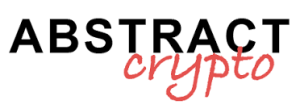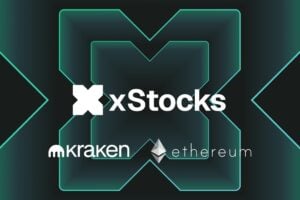Kraken and Backed bring xStocks to the Ethereum mainnet as ERC‑20 tokens, expanding the offering already present on Solana, BNB Chain, and Tron. The announcement, made public by Kraken on September 2, 2025, on the official blog, aims to accelerate the integration between regulated markets and DeFi.
According to the data collected by our analysis team and official communications, the initiative has shown rapid adoption in the first weeks following the multi-chain roll-out, contributing to the declared cumulative volume. Industry analysts note that the arrival on Ethereum, with its extensive ecosystem of smart contracts and liquidity, facilitates the use of xStocks in DeFi protocols and OTC markets.
In the absence of proof of reserves and detailed independent audits, however, custody and reserve verifications remain a crucial element for user trust.
Kraken introduces xStocks on Ethereum
The innovation introduces tokenized stocks on Ethereum with 1:1 backing against the underlying asset. In practice, each token represents a share of the actual stock in custody. An interesting aspect is that, according to the provided information, eligible customers will be able to make on-chain deposits and withdrawals of xStocks directly on the network. Last month, Kraken and Backed had already collaborated to bring xStocks to Tron.
xStocks: mechanics of operation and integration
The xStocks replicate the value of stocks and ETFs listed on Kraken, while Backed holds the reserve of the securities. In this context, the choice of the ERC‑20 standard enables composability with existing applications and simplifies integration into decentralized finance protocols, making usage in DeFi environments more straightforward.
Key Technical Elements
- Standard: ERC‑20 on Ethereum.
- Coverage: 1:1 ratio with the underlying asset in custody.
- Operations: on-chain deposits/withdrawals for verified users.
- Interoperability: compatibility with dApps and DeFi protocols (loans, AMM, strategies).
Why Now on Ethereum: Liquidity and Composability
Ethereum offers a mature smart contract ecosystem, broad liquidity, and established risk management tools. It should be noted that the ERC-20 architecture allows xStocks to be employed in already widespread protocols, surpassing the exclusive use on centralized exchanges.
The Total Value Locked (TVL) on Ethereum continues to be among the highest in the sector, as highlighted by DeFiLlama, promoting the adoption of tokenized financial instruments.
The numbers: over $3.5 billion in volume
Kraken has stated that, since the launch of xStocks at the end of June 2025, the cumulative trading volume between centralized and on‑chain markets has exceeded $3.5 billion. The details on the breakdown between CEX and on‑chain and the exact reference period have not been disclosed.
Access, Requirements, and Jurisdictional Limits
Operations are reserved for users who pass KYC/AML procedures and may be subject to geofencing or local restrictions. The conditions, eligibility, and usage limits are described in the official policies of Kraken and Backed.
Advantages and Use Cases in DeFi
- Continuous operation: 24/7 access to tools that reflect traditional securities.
- Portability: rapid transfers between wallets and protocols.
- Integration: use as collateral, in liquidity pools, or in yield strategies, according to protocol rules.
These benefits depend on the actual market depth, the design of the protocols, and the quality of custody of the underlying asset. In this context, the availability of reliable infrastructure remains crucial.
Main Risks and Regulatory Aspects
- Smart contract risk: bugs or vulnerabilities could lead to losses.
- Counterparty risk: reliance on the entity holding the reserve of the securities.
- Regulatory uncertainty: variable requirements by country and potential changes in the regulatory framework.
- Costs: network fees (gas) and protocol costs could impact profitability.
Transparency regarding custody, audits, KYC/AML controls, and redemption processes is crucial for user protection. A frequently underestimated point is the ability to ensure regular updates on reserves and controls.
Outlook and Competition
Kraken and Backed aim to further extend xStocks across more networks to increase portability and interoperability. The “equities on‑chain” segment is rapidly evolving and is witnessing the entry of various operators specialized in real-world assets.
The competition could accelerate the adoption of common standards for proof of reserves, reporting, and cross-chain interoperability.


